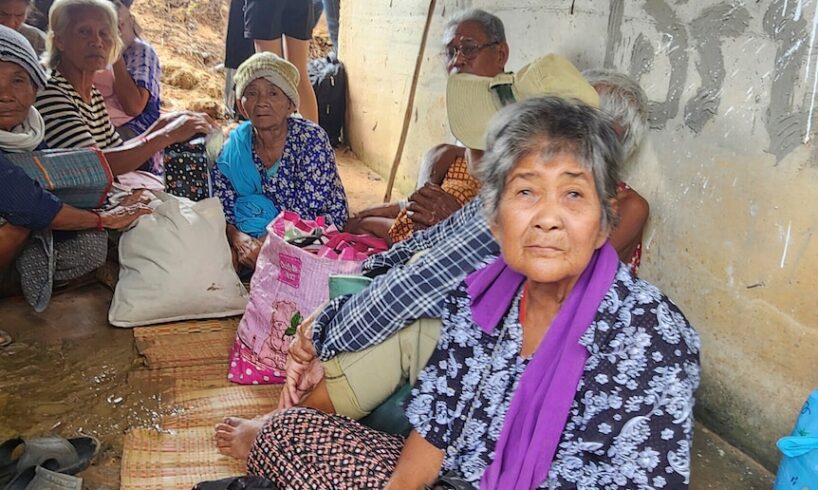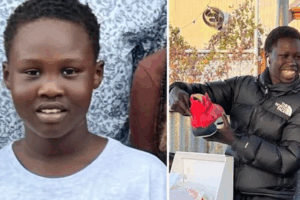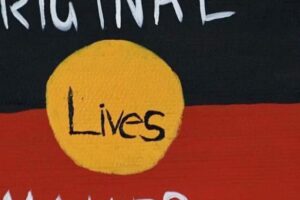
Months of border tension between Thailand and Cambodia have escalated into an armed clash that has killed as many as 11 civilians and left others fleeing for safety.
Both countries have exchanged gunfire on the border, and the Thai army has responded with air strikes at military targets, as each nation blamed the other for the escalation of conflict.
Thai Health Minister Somsak Thepsuthin told reporters that Cambodia’s actions, including an attack on a hospital, should be considered war crimes.
But what exactly is going on, and how did we get here?
Here’s what to know about the dispute between the two South-East Asian neighbours.
What’s happening?
Armed clashes broke out on Thursday in long-disputed border areas in Thailand and Cambodia, which included gunfire exchanges and shelling and rocket fire, which Thai authorities said killed at least 11 Thai civilians, including a five-year-old, and injured 14 others in three provinces.
Loading…
Thailand responded with air strikes. Of the six F-16 fighter jets that Thailand readied to deploy, one of the aircraft fired into Cambodia and destroyed a military target, the Thai army said.
“We have used air power against military targets as planned,” Thai army deputy spokesperson Richa Suksuwanon told reporters.
Clashes are ongoing in at least six areas along the border, the Thai Defence Ministry said.
The first clash on Thursday morning happened in an area near the ancient Ta Muen Thom temple, along the border of Surin and Cambodia’s Oddar Meanchey province.
Heavy smoke and fire seen at Thailand gas station amid escalating border clash with Cambodia.
Why is this happening?
The dispute first flared in May after armed forces of Thailand and Cambodia briefly fired at each other in a relatively small, contested border area that each country claims as its own.
Both sides accused each other and said they acted in self-defence.
A spokesperson for Cambodia’s defence ministry said there had been an unprovoked incursion by Thai troops, and Cambodian forces had responded in self-defence.
While the countries said afterwards they agreed to de-escalate the situation, Cambodian and Thai authorities continued to implement or threaten measures short of armed force, keeping tensions high.
Thailand added tight restrictions at the border with Cambodia that stopped almost all crossings except for students, medical patients and others with essential needs. On Thursday, Thai authorities announced they were sealing the border entirely.
Thai civilians killed in Cambodian border conflict
Cambodia also banned Thai movies and TV shows, stopped the import of Thai fuel, fruits and vegetables, and boycotted some of its neighbours’ international internet links and power supply.
The neighbours are locked in a bitter spat over an area known as the Emerald Triangle, where the borders of both countries and Laos meet, and which is home to several ancient temples.
The row has dragged on for decades, flaring into bloody military clashes more than 15 years ago and again in May, when a Cambodian soldier was killed in a firefight.
What happens when an Australian travels between the countries?
Australian resident Olivia Tedeschi travelled from Cambodia to Thailand last week and told the ABC that foreign tourists like herself were “panicking” after all operating buses were cancelled and she was forced to fly.
“You physically couldn’t get from Cambodia to Thailand or vice versa by border land crossings,” she said.
Olivia Tedeschi had been volunterring in Cambodia before her trip to Thailand. (Supplied: Olivia Tedeschi)
Ms Tedeschi, who was volunteering in Cambodia, planned to catch the popular seven-hour bus from Siem Reap in the country’s north-west to Bangkok last week.
“Everyone catches the buses, but then all of a sudden, all of the buses started getting cancelled,” she said. “They told us it was because the borders were shut.”
She said a young girl from Cambodia told her she was worried the conflict would escalate.
“This young girl in Cambodia turned to me and said, ‘I don’t want there to be a war. I am so worried it will turn into Gaza.'”
The 26-year-old Tasmanian resident was able to catch a flight from Siem Reap to Bangkok, but said she was questioning if she should leave the country while she can.
“Everyone was panicking when we heard the borders were closing,” she said, referring to foreign travellers in hostels and popular online travel group chats and forums.
“No one really knows what to do.”
The Department of Foreign Affairs updated its travel warnings for Thailand on the government’s Smartraveller website on June 30, advising Australians to exercise a high degree of caution due to safety and security risks.
It advised travellers in Cambodia to monitor the ongoing border dispute and follow the advice of local authorities.
“I remember thinking ‘oh, they’ll probably open them back up in two weeks’ [when I wanted to leave], but they didn’t,” she said about leaving Cambodia.
“I’m not sure if I should leave Thailand or not.”
Thai soldiers at a border area on Sunday. (AP: Royal Thai Army)
Why is the border dispute a long-standing issue?
Border disputes have caused periodic tensions between the two neighbours.
Thailand and Cambodia share more than 800 kilometres of land border.
The contesting claims stem largely from a 1907 map drawn under French colonial rule that was used to separate Cambodia from Thailand. Cambodia has been using the map as a reference to claim territory, while Thailand has argued the map is inaccurate.
The most prominent and violent conflicts have been around the 1,000-year-old Preah Vihear temple.
A protest calling for Thailand’s Prime Minister Paetongtarn Shinawatra to resign after her leaked phone call with former Cambodian Prime Minister Hun Sen on the Thailand-Cambodia border dispute in June. (Reuters: Chalinee Thirasupa)
In 1962, the International Court of Justice awarded sovereignty over the temple area to Cambodia. The ruling became a major irritant in bilateral relations.
Cambodia went back to the court in 2011, following several clashes between its army and Thai forces that killed about 20 people and displaced thousands.
The court reaffirmed the ruling in Cambodia’s favour in 2013.
Cambodia has again turned to the international court to resolve the border disputes, but Thailand has rejected the court’s jurisdiction.
What happens now?
Pravit Rojanaphruk, a journalist with Thai news outlet Khaosod English, said he was expecting the Thai air strikes to continue for a few hours, if not days.
He told ABC News Channel that the civilian government has been very quiet about the clash.
“It seems as if the Thai government had no control over the Thai army,” he said.
Cambodian men must do military service from 2026
“It is no longer a political decision; it seems it’s the army making the decision to strike Cambodia.
“Normally, one would expect civilian oversight of supremacy of the military.”
Thailand’s acting Prime Minister Phumtham Wechayachai said the situation was delicate.
“We have to be careful,” he told reporters.
“We will follow international law.”
He told a press conference that there had been no declaration of war and conflict was not spreading into more provinces.
The caretaker said Cambodia had fired heavy weapons into Thailand without any specific targets, resulting in civilian deaths.
An attempt by Thailand’s then-premier Paetongtarn Shinawatra to resolve the recent tensions via a call with Cambodia’s influential former Prime Minister Hun Sen, the contents of which were leaked, kicked off a political storm in Thailand, leading to her suspension by a court.
ABC/Reuters





